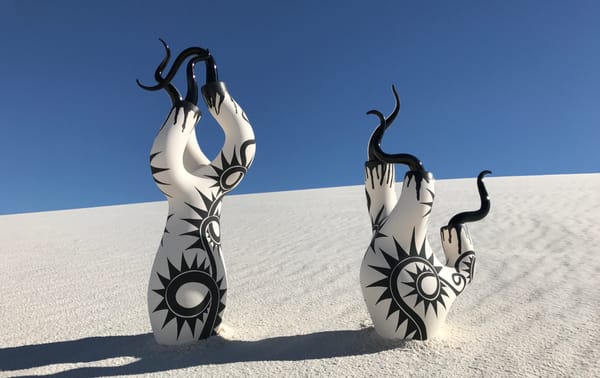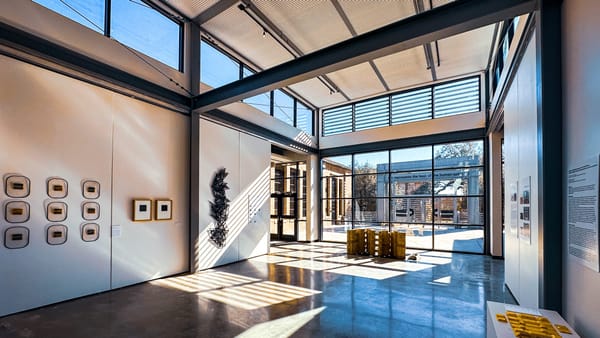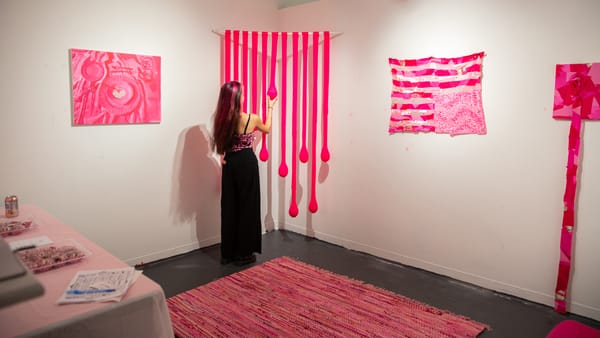A Queer Guide to TEFAF New York
Several works on display in this year’s iteration of the fair, both ancient and modern, stand out for their homoeroticism and queer aesthetics.
At this year’s iteration of TEFAF New York, a large lavender sculpture by Ukrainian artist Aljoscha dangles from the ceiling above the entry into the armory’s vast space. The carpet is a similar hue, mirroring the poly(methyl acrylate) sculpture. Although it probably wasn’t intentional, lavender is an apt color choice — several works on display, both ancient and modern, stand out for their homoeroticism and queer aesthetics.
On view at the booth of Florence gallery Tornabuoni Art’s booth is a found object work by the late Sicilian Pop artist Mimmo Rotella, a poster for Marco Ferreri's Italian crime film Dillinger Is Dead (1969). The artist scratched away at the surface, allowing an older adult movie poster underneath it to pierce through. The first layer is ripped away just enough to reveal a male form underneath, while a female form remains hidden; the interplay between the layers creates the illusion that one man is embracing another. As a result, Rotella imbues a macho heteronormative film with homoeroticism, alluding to concealed lives.
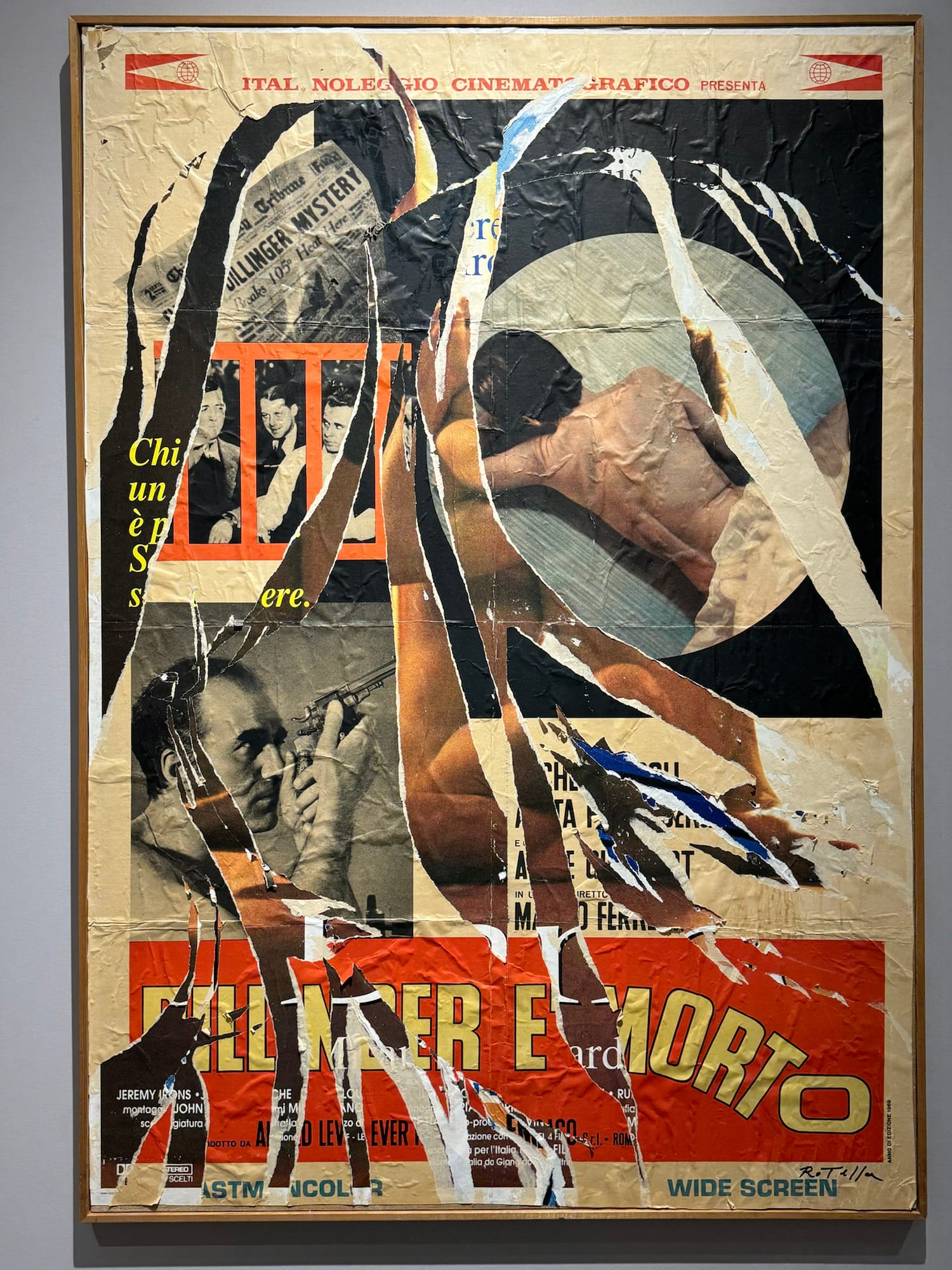
On view at Petzel Gallery’s booth is an abstracted portrait of Oscar Wilde’s effete antihero Dorian Grey by Roger-Edgar Gillet from 1969. Gillet based his composition on an illustration by Henry Keen that serves as the frontispiece in some early editions of the book, reimagining it with heavy, gestural brushwork and rough textures. The protagonist’s visage appears to dissolve into the background, perhaps suggesting how many gay men camouflage themselves to blend into their environment. The subject seems to fight back against this erasure, to maintain his identity as Dorian Grey, adding a level of tension to the work that parallels the real-life tension gay men experience between standing out and hiding, both in postwar Paris and today.
Stepping back in time, the booth for London’s Charles Ede Gallery displays two remarkable Minerva statuettes from the Roman Empire. The goddess of wisdom was notorious for her gender-nonconforming traits. In both statuettes, she wears a Corinthian helmet with a horsehair plume. Originally worn by male soldiers in Greece, it became associated with the goddess. The later figure (c. 2nd–3rd century CE) probably held a bow in her left hand, while the earlier figure (c. 1st century CE) holds an owl in her right hand, a symbol of wisdom. In both, Minerva wears her own unique armor, her aegis, bearing an image of the head of Medusa.
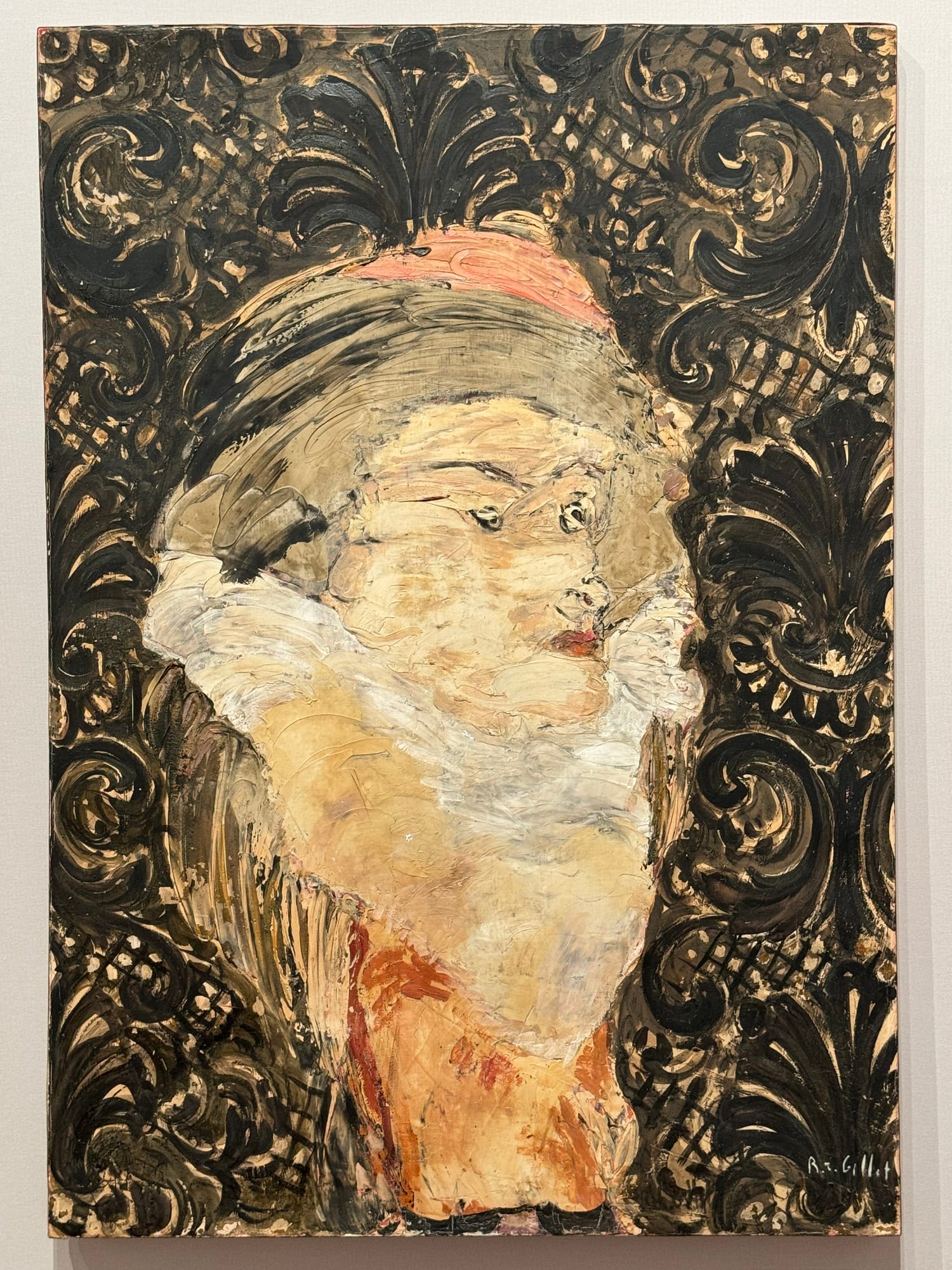
Charles Ede Gallery also features an unabashedly homoerotic kylix (wine drinking vessel) portraying a young nude warrior in the red figure style. A shield on the interior is faintly inscribed with “HO PAIS KALOS” (“the boy is beautiful”), a message that would be uncovered while drinking the wine. The kylix was a gift from a boy of around 20, called an erastes, to a younger boy, probably in his later teens, known as the ephebe.
Another homoerotic ancient Greek Kylix is on display in the upper-level room of Greenwich, Connecticut’s Ariadne Galleries. It depicts an athlete holding a suggestively phallic weight in each hand. This visual pun would have been hidden when the kylix was full, and revealed as revelers imbibed their red wine.
References to homoeroticism in antiquity continue with Paris’s Galerie Chenel. A sculpture of Pan, the Greco-Roman god of nature, spring, and fertility, is depicted with an erect phallus and a long beard, suggesting his scandalously uncivilized nature. A second phallus pokes through an elaborate headdress. Unlike other satyrs, this Pan has human buttocks, a wink to its homoeroticism. Roman statues of Pan are relatively rare. The Vatican Museum and British Museum collections have statues similar to this one, which has been in Paris since the 19th century. This is a rare opportunity to see one in New York. Pan is meaningful in today’s queer community as a potential symbol of pansexuality.
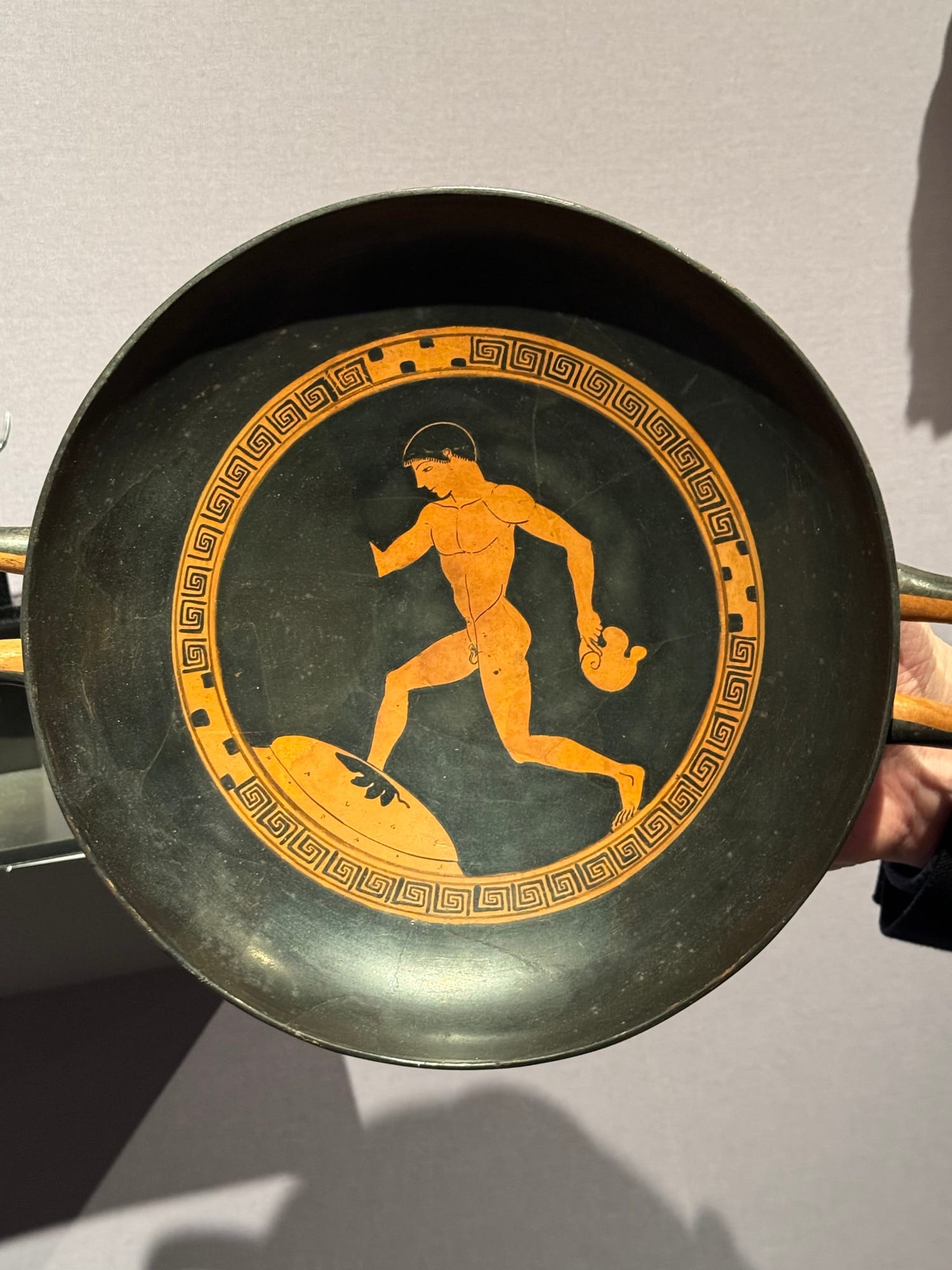
Returning to modernity, Paris’s Chantal Crousel Gallery presents two striking queer photographs. The first is a self-portrait by Andy Warhol, with the gay artist Donald Baechler. The shadows behind them appear to kiss, but it’s not clear whether this was intentional or accidental, or an ambiguous detail Warhol chose to leave in.
The second is an image by Wolfgang Tillmans of a man named Remy, whom Tillmans met on the dance floor at the Spectrum, an underground queer nightclub in Brooklyn, in 2015. The artist asked him to pose for the photo awash in the club’s blue light. It’s an enticing celebration of the beauty of queer nightlife.
In this context, Waddington Custot gallery’s “LOVE” sculpture by Robert Indiana in red, white, and blue (his favorite color scheme for the piece) returns to its radical origins as a product of the 1960s Civil Rights movement, war protests, and nascent gay liberation movement. Since coopted into heteronormative notions of love and family, the work is more in tune with the gay couples who approached straight lawmakers with their love stories in the 2000s, in their fight for marriage equality.
Prestigious art fairs like TEFAF have not always shown such unabashedly homoerotic works. This year's lavender carpet is symbolic of subtle but significant changes in the art market. The openness of the next generation of art collectors invites us to appreciate what earlier generations once called the love that dare not speak its name — and the queer art that dare not appear in public.
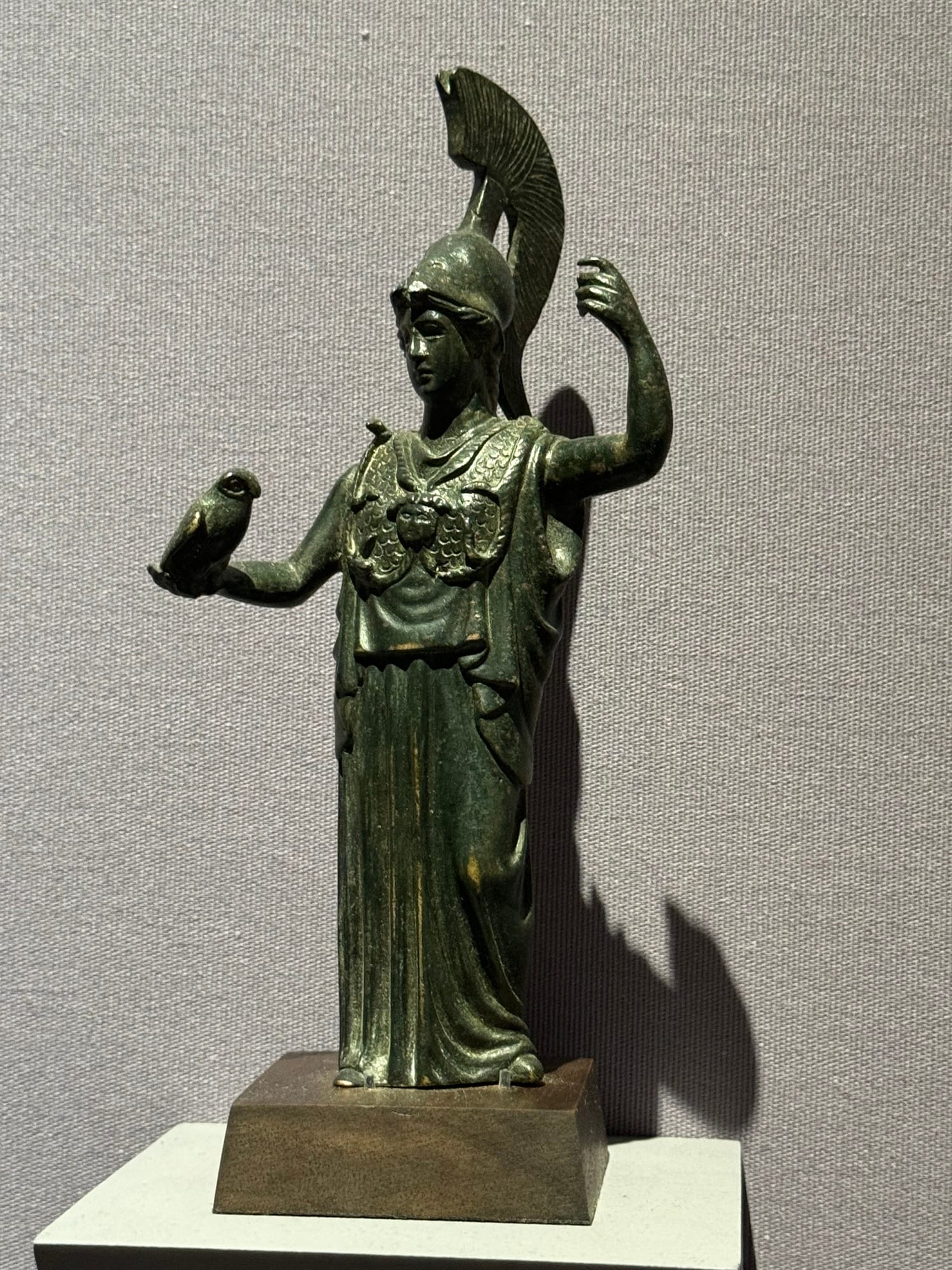

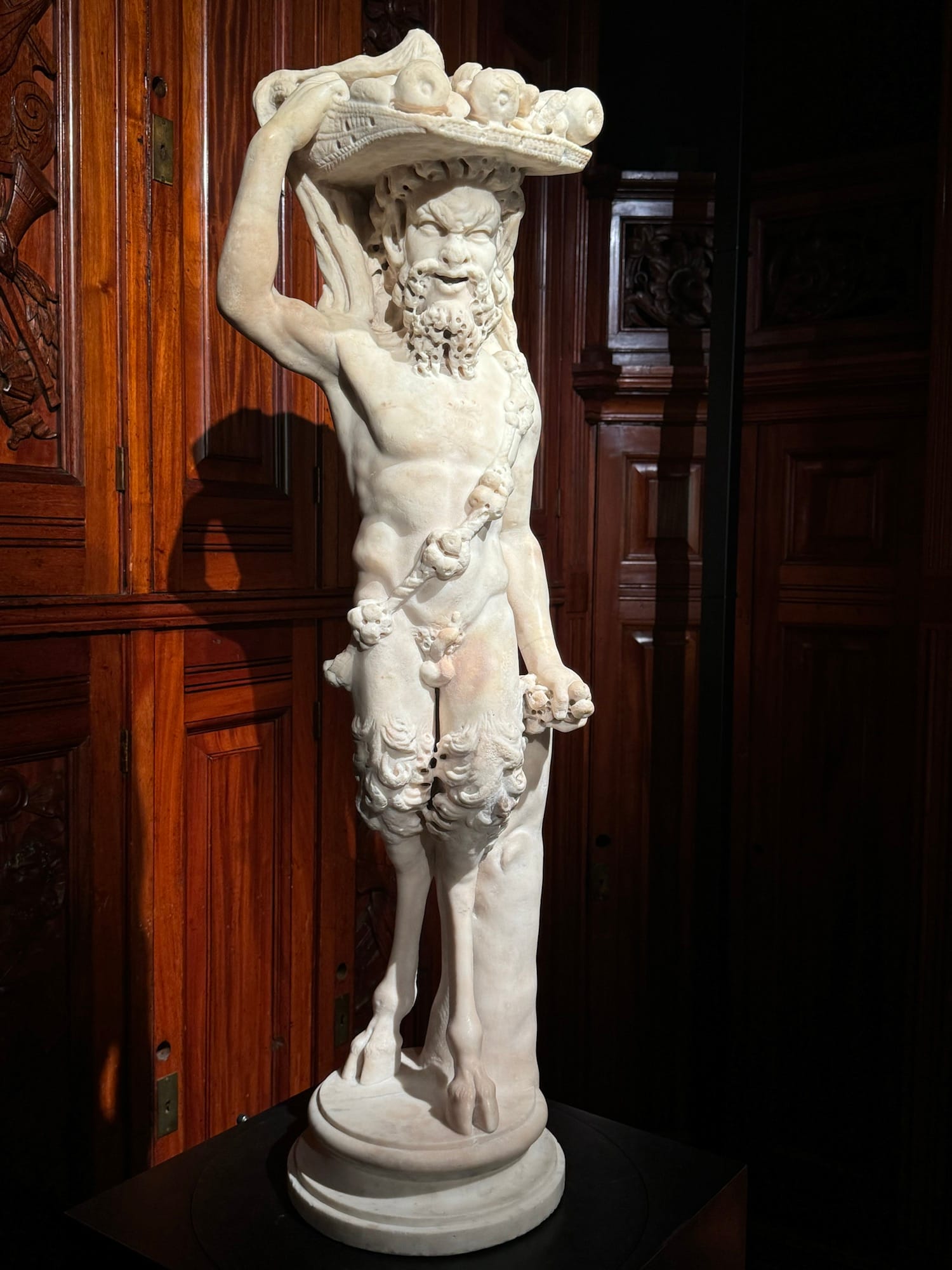

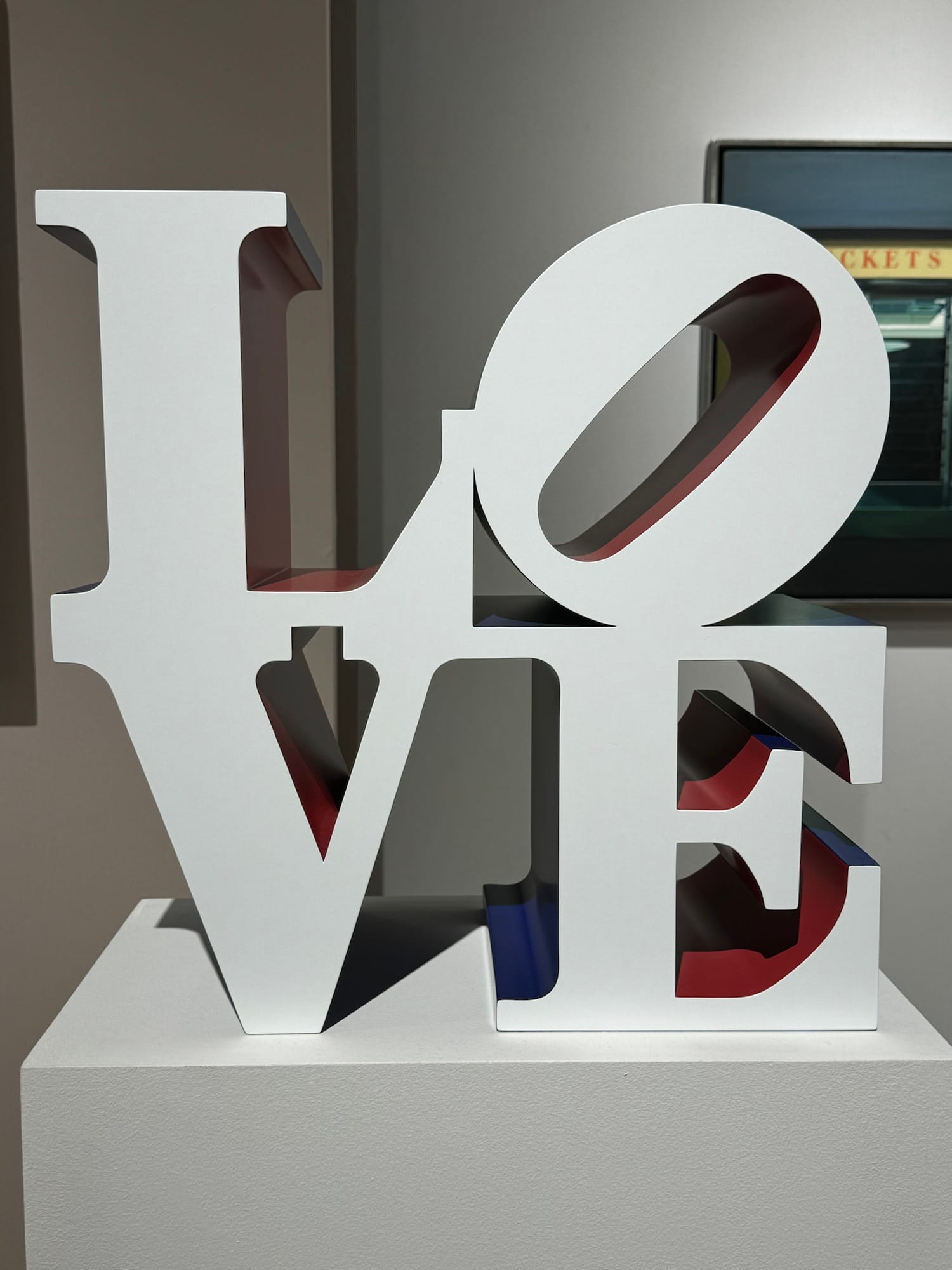
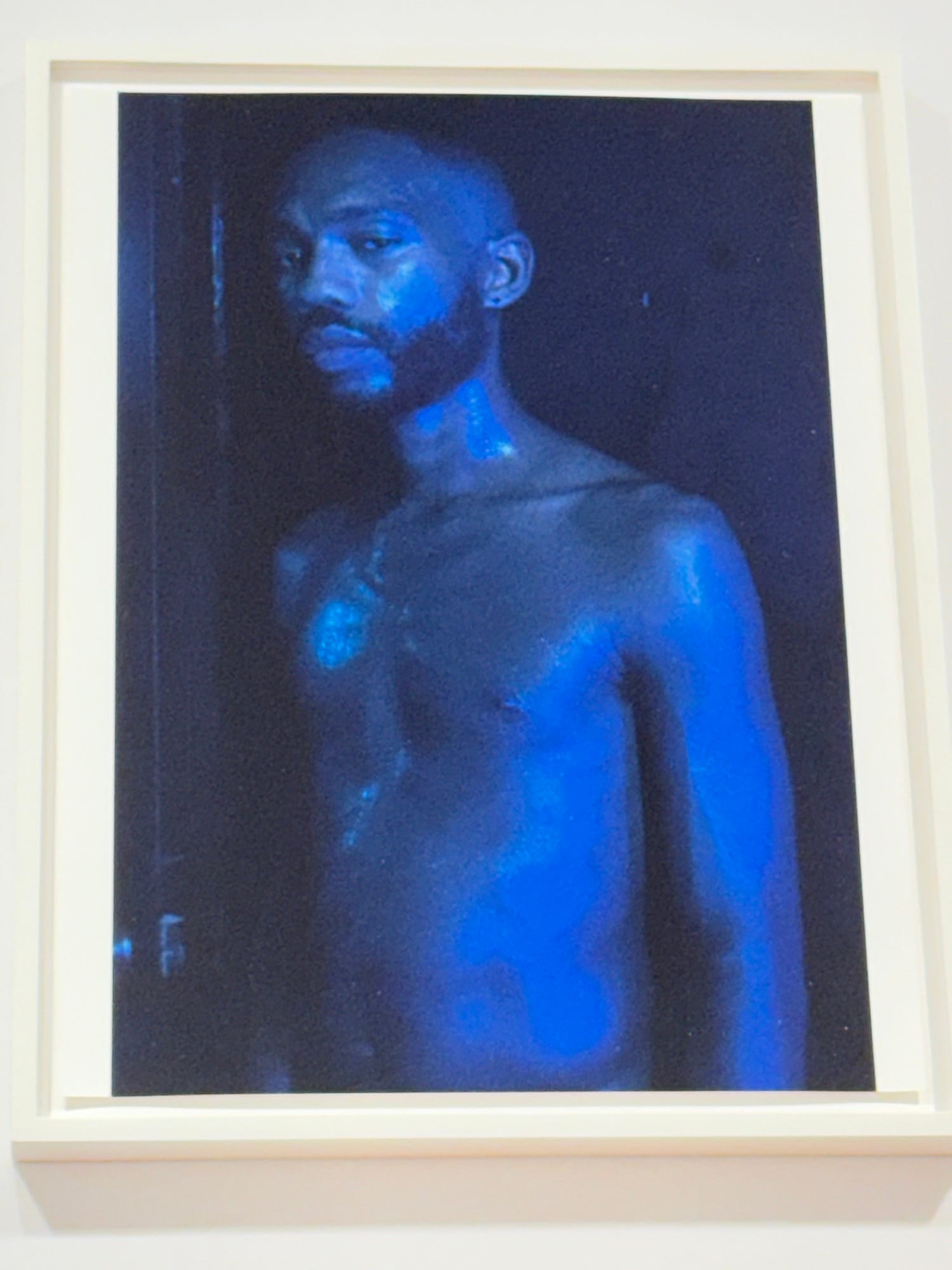
TEFAF New York continues at the Park Avenue Armory (643 Park Avenue, Upper East Side, Manhattan) through May 14.


